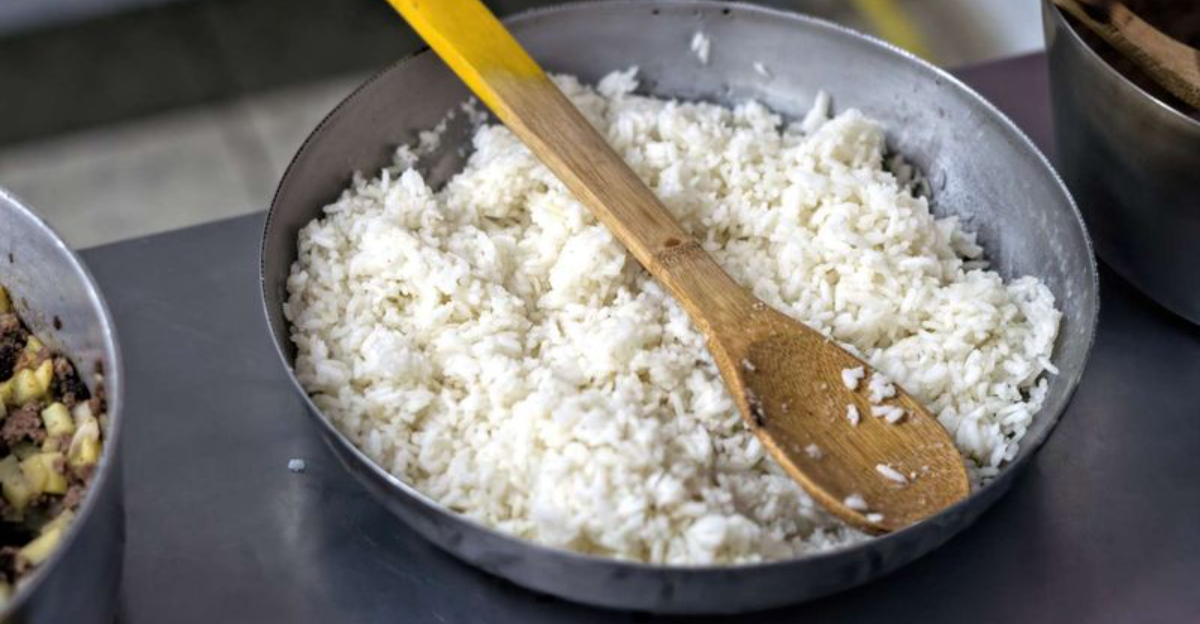Be Aware Of These 12 Foods That Can Become Toxic When Reheated

Ever wonder if that leftover pasta or rice sitting in your fridge might be hiding a dangerous secret? Some everyday foods can actually develop harmful bacteria or toxic compounds when they’re reheated incorrectly.
Before you pop that container in the microwave, take a moment to learn which foods need special attention to keep your family safe from foodborne illness.
1. Potatoes’ Hidden Danger
Spuds might seem harmless, but improperly stored baked potatoes create the perfect breeding ground for Clostridium botulinum.
The aluminum foil wrapping many people use creates an oxygen-free environment where this dangerous bacteria thrives. Even a few bites of affected potato can cause botulism—a potentially fatal illness.
The toxin attacks your nervous system, causing difficulty breathing, muscle paralysis, and in severe cases, the end of your life.
2. Rice Turns Treacherous
Your innocent bowl of leftover rice might be harboring an invisible villain called Bacillus cereus. This sneaky bacteria produces heat-resistant toxins that survive even after thorough reheating. Refrigeration delays but doesn’t stop bacterial growth.
When rice sits at room temperature, bacteria multiply rapidly, creating toxins that cause nausea, vomiting and diarrhea within hours of consumption.
3. Spinach’s Nitrate Nightmare
Popeye’s favorite veggie harbors a less-known risk when reheated. Spinach naturally contains nitrates that convert to harmful nitrites during storage and reheating, especially in microwaves.
While adults generally process small amounts safely, infants lack the enzyme needed to handle nitrites properly.
High nitrite consumption can lead to methemoglobinemia—a rare but serious condition that reduces blood’s oxygen-carrying capacity.
4. Mushroom Mishaps
Fungus fans beware! Mushrooms contain proteins that begin breaking down immediately after cooking. When left at room temperature or reheated multiple times, these proteins degrade further, creating compounds that upset your digestive system.
The delicate structure of mushrooms makes them particularly vulnerable to bacterial contamination. Even properly stored mushrooms should only be reheated once to minimize risk of foodborne illness and preserve their nutritional value.
5. Chicken’s Reheating Rules
Poultry proves particularly problematic when improperly reheated. Salmonella and Campylobacter bacteria thrive in the protein-rich environment of cooked chicken left in the temperature danger zone (40°F-140°F).
Microwaving creates hot and cold spots where bacteria can survive. Always use a food thermometer to ensure chicken reaches 165°F throughout before serving.
Multiple reheatings also toughen proteins, making them harder to digest.
6. Eggs’ Unexpected Risks
Morning scramble leftovers might scramble your stomach later! Eggs provide the perfect medium for Staphylococcus aureus bacteria, which produce heat-resistant toxins even after thorough cooking. The proteins in eggs also undergo chemical changes during storage and reheating.
These changes can create compounds that trigger digestive distress in sensitive individuals. For safety’s sake, cook only what you’ll eat immediately or reheat to steaming hot.
7. Seafood’s Sneaky Spoilage
Yesterday’s fish fillet might be today’s trip to the emergency room. Seafood contains proteins that break down rapidly after cooking, creating a breeding ground for bacteria like Vibrio and histamine-producing microbes. Once these bacteria multiply, reheating won’t destroy their toxins.
Scombroid poisoning from improperly stored fish causes facial flushing, headache, and heart palpitations within minutes of consumption. Even properly refrigerated seafood should only be reheated once.
8. Pasta’s Perilous Problem
Mama mia! Your leftover spaghetti could be serving up a side of food poisoning. Like rice, pasta provides the perfect starchy environment for Bacillus cereus to multiply when left at room temperature.
The bacteria produce two types of toxins—one causes vomiting within hours, the other triggers diarrhea after 8-16 hours.
Refrigerate pasta within two hours of cooking and reheat thoroughly until steaming hot throughout to minimize risk.
9. Celery’s Chemical Change
Crunchy celery stalks transform dramatically when cooked in soups and stews. High nitrate content converts to potentially harmful nitrites during storage, especially if left at room temperature before refrigeration.
These nitrites can form nitrosamines—compounds linked to increased cancer risk—when reheated at high temperatures. The effect multiplies with each reheating cycle.
Store celery-containing dishes promptly and reheat only once to minimize nitrosamine formation.
10. Beets’ Surprising Transformation
The vibrant root vegetable hiding in your refrigerator carries similar risks to spinach and celery. Beets naturally contain high levels of nitrates that convert to nitrites during improper storage and reheating.
While healthy adults process small amounts without issue, infants and people with certain medical conditions face greater risk.
The nitrite conversion accelerates when beets are reheated multiple times. Store properly and limit reheating to preserve both safety and nutritional value.
11. Oils Turn Toxic
Frying oil becomes a chemical cocktail when repeatedly heated. Each reheating cycle creates more acrylamide, aldehydes, and polycyclic aromatic hydrocarbons (PAHs)—compounds linked to increased cancer risk.
The smoke point lowers with each use, allowing harmful compounds to form at lower temperatures. Oil also becomes rancid through oxidation, creating free radicals that damage cells.
Use fresh oil for each frying session and discard used oil properly.
12. Leafy Greens Go Bad
Kale, chard, and collard greens share spinach’s nitrate concerns when reheated. These leafy powerhouses convert healthy nitrates to potentially harmful nitrites during storage and subsequent reheating. Microwaving particularly accelerates this chemical conversion.
The resulting compounds can interfere with oxygen transport in the bloodstream, especially in infants and vulnerable populations.
Enjoy these nutritional superstars freshly cooked whenever possible rather than as leftovers.
